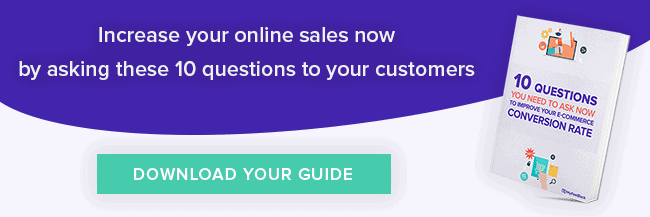There are a lot of things to consider when a visitor comes to your site and chooses not to buy your product or service. They came, they saw, they didn’t buy…what went wrong? First of all, it’s extremely valuable to note that they came to your website in the first place. This means that they...
There are a lot of things to consider when a visitor comes to your site and chooses not to buy your product or service.
They came, they saw, they didn’t buy…what went wrong?
First of all, it’s extremely valuable to note that they came to your website in the first place. This means that they saw something that inspired them to go to your site, whether an advertisement, a good review from a friend, or a google search. It’s important for you to not waste this potential for new data. Do whatever you can to track how this visitor ended up on your site so that you can determine which of your marketing efforts are paying off by getting you new visitors. Whether it’s through UBM codes or by including a “how did you hear about us” question on your homepage, make sure you collect as much data as possible on what successfully attracted new visitors to your page.
Second of all, it’s important to consider that they came to your site but didn’t buy. Usually, this means that there is a disconnect between what your customer expected to find on your site, and what they discovered. It also means that there is a disconnect between what you thought your customers want and what they really are looking for. This disconnect often comes from a lack of communication between you and your audience, a leading reason why online commerce companies underperform.
Though this might seem discouraging, it doesn’t have to be. It just means that you have some work to do in terms of getting to know your visitors and catering your products and services to them. As long as you do the work to figure out why they didn’t buy and use that information to your company’s advantage, having a visitor not buy something on your site can actually be a very revealing and informative tool, and as the CMO, this should flare up a “potential source for new customer knowledge“ flag in your brain.
How do you determine why they didn’t buy?
Once again, the best method is just to ask. Sending out a survey to these visitors will help understand where you missed your target. At the same time, it will show them how interested you are in their business and keep you top of mind. Net promoter score surveys are a great way to get quantitative and qualitative data that will help you piece together the puzzle of a non-buying visitor. Make sure you ask targeted, helpful questions that will shed light on how they feel about your company and why.
If your data reveals that the visitor didn’t buy because they were still in the awareness of consideration stage of their buyer journey, congratulations: you’ve got yourself a warm lead. Now is the time to follow up with great content. You can ease your potential customer into the decision stage with some effective lead nurturing. A drip campaign that provides the lead with informative, entertaining content can help boost your email open rate by 80% and build the trust necessary to get them ready to make a purchase with your company.
On the other hand, if your data reveals that your visitor didn’t buy because your products and services don’t match up to their needs, you can take their feedback and use it to brainstorm how you can cater existing products or match new products to fill this void. Remember, we are living in “the age of the customer”, a time of total customer connectivity. Surveys, analytics, and metrics give us the capacity to be completely tuned in to our customers and have almost endless customer knowledge. This means businesses can no longer afford to ignore customer feedback and satisfaction. If a visitor went to your site, that means they saw something in your company that appealed to them. Don’t lose this potential customer by not offering the product or service they are looking for.
Lastly, look out for the possibility that your visitor didn’t buy because they found your site confusing or difficult to navigate. Abandoned shopping carts or incomplete actions can be giveaways that your visitors are finding your site hard to use. Make sure you have clearly stated call to actions on your site and a user-friendly check-out process. If not, you could be missing out on valuable customers.
Getting visitors on your site who don’t buy your product can be a drag. However, if you use the right tools and use surveys to collect the right data, every single visitor can be converted into useful information that will help you build your customer knowledge and create a more satisfying experience for future visitors.








